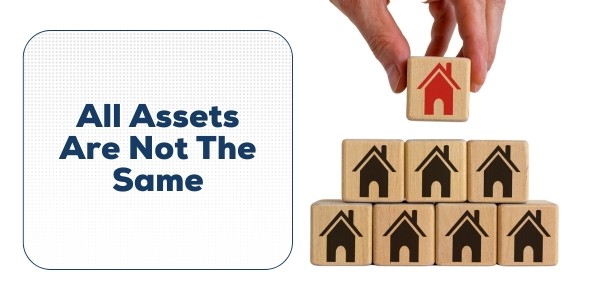All assets are not the same
Do you sometimes lie awake at night wondering what effect the latest share market "correction" or property "boom" or “bust” is having on your investments? Understanding the differences between the various investment assets will help you enjoy better sleep patterns knowing that a diversified portfolio can be a good way to manage investment risk.
Asset Classes
1. Cash
Money in the bank, a term deposit, or hundred dollar bills stuffed under the mattress - cash is, at face value, the safest, least volatile
asset class. The return from cash is entirely in the form of income (interest), which means there is no capital growth. It also produces
the lowest returns over the long term, and unless care is taken, the value of cash can be eroded by inflation.
2. Fixed Interest
Next up the risk/return slope is fixed interest. This covers investments such as government and corporate bonds, bills and debentures. Once
again, bonds mainly produce income, but because they can be bought and sold, their value can fluctuate due to changes in interest rates.
There is also risk associated with the quality of the issuer of the bond. Australian government bonds are considered amongst the safest. At
the other extreme, 'junk' bonds issued by some companies are very high risks.
3. Property
Good old ‘bricks and mortar’ might sound like a 'safe bet', but property is towards the higher end of the risk and return chart. Investors
can choose from many different types of residential and commercial property, each with varying risk and return characteristics. The property
market is cyclical, and can experience downturns, but it can also provide steady and reliable income, along with good prospects of capital
growth when chosen well.
4. Shares
Shares are considered high-risk investments, but they also offer higher returns to long-term investors. Many 'blue-chip' shares also provide
income via dividends. As you know, share prices can move up and down over short time periods, causing anxiety for some investors. However,
if you invest in the next Google or Apple, the capital growth can be spectacular!
5. Alternative Assets
Some investments don't fit neatly into the previous classifications so portfolio managers may place them into an 'alternative' asset class.
This may include infrastructure investments, such as airports and toll roads, and absolute returns funds, which rely on trading strategies
for their performance.
By altering the proportion of funds allocated to each asset class, portfolios can be constructed across the full spectrum of risk and return.
How diversified are your investments? Or a better question might be: how well do you sleep at night?
Are you ready to build a balanced investment strategy that aligns with your long-term goals? Speak with a qualified financial planner today to explore how cash, fixed interest, shares, property, and alternative assets can work together to strengthen a portfolio.
Call 1300 363 866 or visit https://www.mcs.au/services/financial-planning/
to schedule a consultation and take the next step towards building your financial confidence.
McConachie Stedman Financial Planning Pty Ltd is a Corporate Authorised Representative of MCS Financial Planning Pty Ltd | ABN 11 677 710
600 | AFSL 560040
General Advice Warning
The information provided in this article is for general information purposes only and is not intended to and does not constitute formal
taxation, financial or accounting advice. McConachie Stedman does not give any guarantee, warranty or make any representation that the
information is fit for a particular purpose. As such, you should not make any investment or other financial decision in reliance upon the
information set out in this correspondence and should seek professional advice on the financial, legal and taxation implications before
making any such decisions

